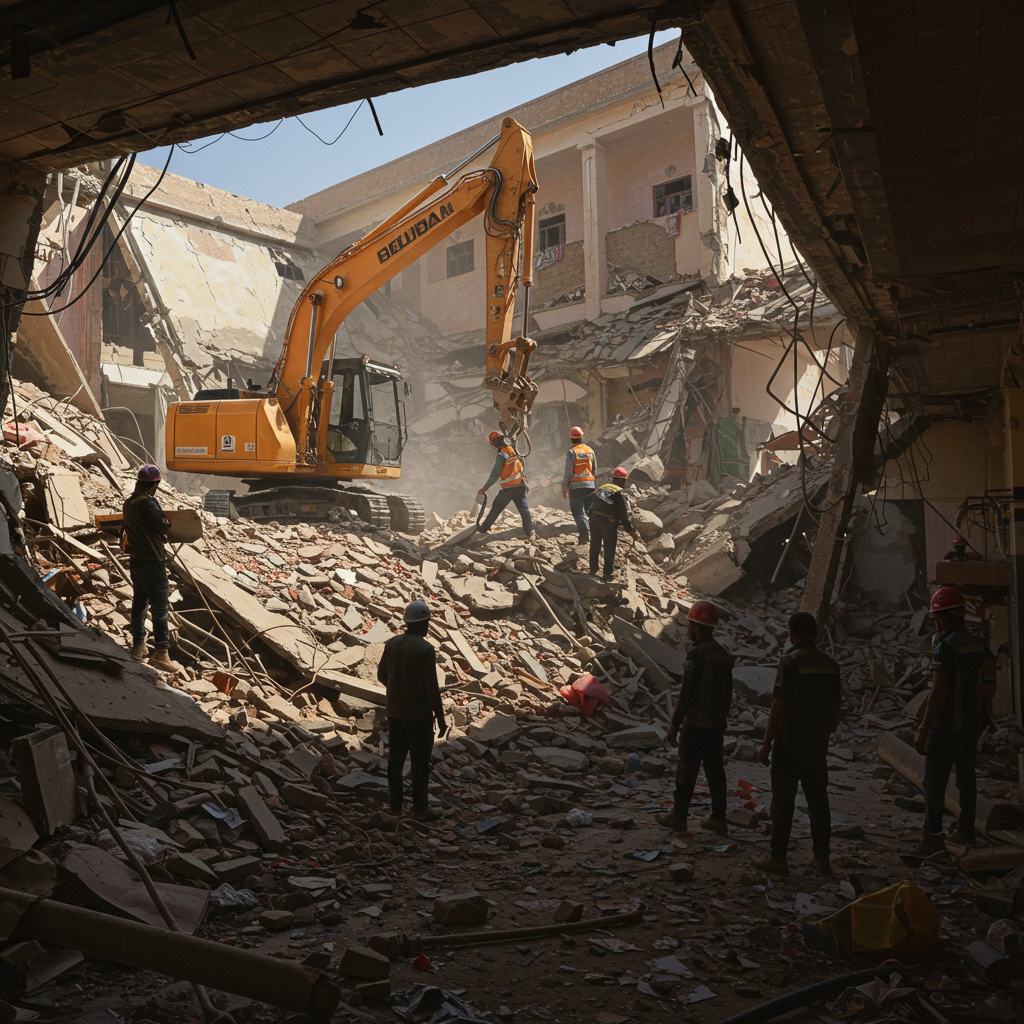<a href="https://news.quantosei.com/2025/07/05/canadas-indigenous-groups-demand-a-say-in-carneys-race-to-build/" title="Canada's major projects Indigenous rights: Carney plan hits backlash”>federal legislators recently passed Bill C-5, a key piece of legislation designed to accelerate major “nation-building” projects across Canada and streamline interprovincial trade. Despite this federal push for speed, the Yukon Environmental and Socio-economic assessment Board (YESAB) confirms it will not change its assessment processes to align with the new federal timeline for nationally significant projects. This stance highlights the distinct environmental and socio-economic assessment framework operating in the Yukon, rooted deeply in territorial treaties and legislation.
The passage of Bill C-5 at the federal level, which received royal assent on June 26, aims to dismantle barriers to internal trade, improve labour mobility, and notably, speed up approvals for projects deemed critical to national interest. While the bill introduces significant amendments to the federal Impact Assessment Act, officials confirm these changes do not extend to the Yukon’s established assessment body or the specific legislation governing its work.
Yukon’s Independent Assessment Framework Holds Firm
The Yukon’s assessment process is governed by the Yukon Environmental and Socio-economic Assessment Act (YESAA). This act mandates how proposed projects in the territory are evaluated for their potential effects on the environment, society, and economy. Unlike the federal Impact Assessment Act, YESAA is founded upon Chapter 12 of the Umbrella Final Agreement and the subsequent Yukon First Nation Final Agreements. This treaty basis gives YESAA and YESAB a unique jurisdictional standing, distinct from purely federal environmental regulations.
According to Lavina Mulchandani, a communications representative for YESAB, the federal Bill C-5 does not compel YESAB to alter its procedures or require changes to YESAA. Her statement, provided in an email on June 24, clarifies YESAB’s position: the board will not adapt its assessment timelines specifically to accelerate projects simply because they are designated as being in the national interest under the new federal framework.
Daniel Savoie, a spokesperson for the Privy Council Office, echoed this jurisdictional clarity in an email statement. He confirmed that projects undergoing assessment by the Northern Projects Management Office, including potential “nation-building” initiatives in the North, will continue to be subject to treaty-based environmental assessment processes. These local, treaty-rooted assessments will proceed in parallel with any other relevant federal authorizations under the new, streamlined federal approach.
Defining “Nation-Building” Projects Under Bill C-5
Bill C-5 allows for the federal government to designate certain projects as being in the national interest. The legislation outlines key criteria for this designation:
Potential to enhance Canada’s autonomy and security.
Provision of economic or other benefits at a national level.
High likelihood of successful execution.
Advancement of the interests of Indigenous peoples.
Contribution to “clean growth” and Canada’s climate change objectives.
Despite the framework being in place, no projects across Canada have yet been officially designated as being of national interest under Bill C-5.
The federal government has committed to collaborating with provinces, territories, and Indigenous peoples to identify and move forward with projects meeting these criteria. A statement from the Privy Council Office emphasized the importance of consultation. It specifies that Indigenous peoples whose treaty rights could potentially be affected by a project will be consulted before it is designated as national interest and before any condition documents related to the project assessment are issued or modified.
The Act also makes provision for establishing a Federal Major Projects Office. This office is intended to serve as a central point of contact and coordination for project proponents navigating the various federal processes, although its specific role relative to distinct territorial processes like the Yukon’s remains to be fully seen.
Yukon Projects and the National Interest Conversation
The discussion around “nation-building” projects is particularly relevant in the Yukon, a territory with significant resource potential and infrastructure needs. A notable example frequently cited is the proposed electrical grid connection between the Yukon and British Columbia, linking the territory to the broader North American grid.
Both the former Yukon Premier, Ranj Pillai, and the current Premier, Mike Pemberton, have publicly supported this interprovincial grid connection. Pillai previously identified it as a top priority “nation-building” ask during discussions with federal figures, including Prime Minister Mark Carney. Upon taking office, Premier Pemberton echoed this commitment. In a July 4 statement, he confirmed discussing the grid connection project and the territory’s assessment process with federal Crown-Indigenous Relations Minister Rebecca Alty and Yukon MP Brendan Hanley.
However, realizing the Yukon-BC grid connection is a complex undertaking. It is currently in the early stages and is projected to require billions of dollars in investment. Crucially, its successful implementation is contingent upon securing support from the multiple First Nations whose traditional territories the project would traverse. This highlights the practical reality in the Yukon, where major project development is intrinsically linked to treaty obligations and the need for consent and partnership with Indigenous governments.
YESAB’s Internal Push for Efficiency
While remaining independent of Bill C-5’s federal acceleration mandates, YESAB is not static in its operations. Lavina Mulchandani of YESAB confirmed that the board is proactively implementing its own set of broad changes to the rules governing assessments conducted by its designated offices.
These internal adjustments are aimed squarely at improving the overall evaluation process. The goal is to achieve faster, more effective, and more efficient project evaluations within the existing framework of YESAA and its foundational treaty principles. YESAB operates six designated offices across the territory, each responsible for conducting assessments within their respective regions. This distributed model allows for localized expertise and engagement.
The fact that YESAB is pursuing its own efficiency improvements demonstrates a commitment to streamlining processes where possible, but on its own terms and within the context of its treaty-mandated responsibilities. This contrasts with accepting changes driven by a federal act that does not apply to its specific jurisdiction.
The Yukon’s position underscores the complex nature of project approvals in Canada, particularly in Northern regions where modern treaties establish co-management structures and distinct assessment regimes. While the federal government seeks to accelerate national priorities, the Yukon maintains that its established, treaty-based assessment process, designed for thorough socio-economic and environmental review in partnership with First Nations, will continue to function independently of the new federal timelines introduced by Bill C-5.
Frequently Asked Questions
What is the main impact of Canada’s Bill C-5 on project assessments in the Yukon?
The primary impact is minimal. Despite Bill C-5 aiming to speed up federal impact assessments for “nation-building” projects, it does not apply to the Yukon Environmental and Socio-economic Assessment Board (YESAB) or the Yukon Environmental and Socio-economic Assessment Act (YESAA). The Yukon’s assessment process is rooted in treaties and remains separate from the federal Impact Assessment Act that Bill C-5 modifies. Therefore, YESAB will not alter its procedures or timelines based on Bill C-5.
Where can I find information about the Yukon’s specific project assessment process (YESAB/YESAA)?
Information about the Yukon’s project assessment process can be found through the Yukon Environmental and Socio-economic Assessment Board (YESAB) and the Yukon Environmental and Socio-economic Assessment Act (YESAA). YESAB’s operations are based on Chapter 12 of the Umbrella Final Agreement and Yukon First Nation Final Agreements. YESAB maintains six designated offices responsible for regional assessments, and details about their processes and current projects are available directly from YESAB.
How does the designation of a project as “national interest” under Bill C-5 affect Indigenous rights and consultation in the Yukon?
While Bill C-5 aims to accelerate projects federally, the Privy Council Office confirms that in the North, including the Yukon, treaty-based environmental assessment processes will continue for “nation-building” projects. The federal government has committed to consulting Indigenous peoples whose treaty rights may be affected before* a project is designated as national interest under Bill C-5 and before any related conditions are set or changed. In the Yukon, this consultation is also integral to the existing YESAA process, which is founded on the Umbrella Final Agreement and First Nation Final Agreements.
Word Count Check: 975 words



